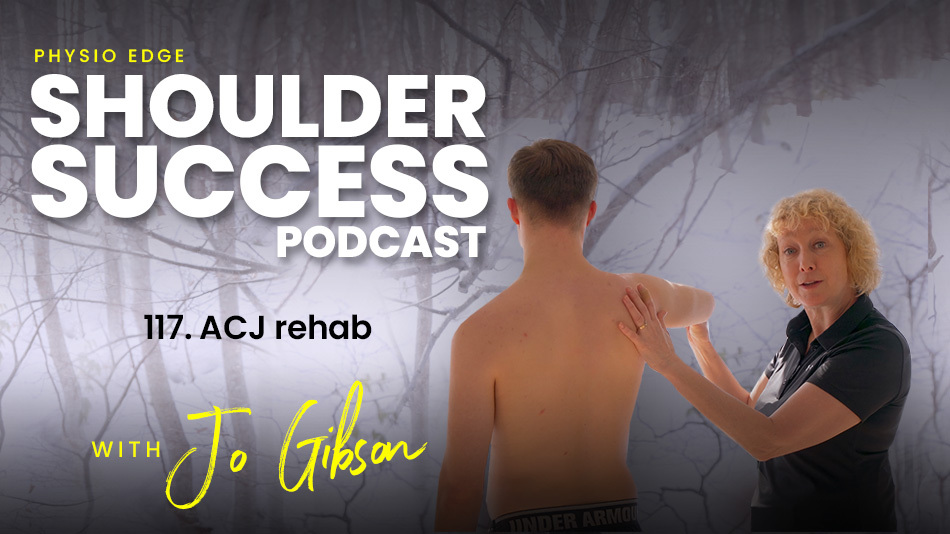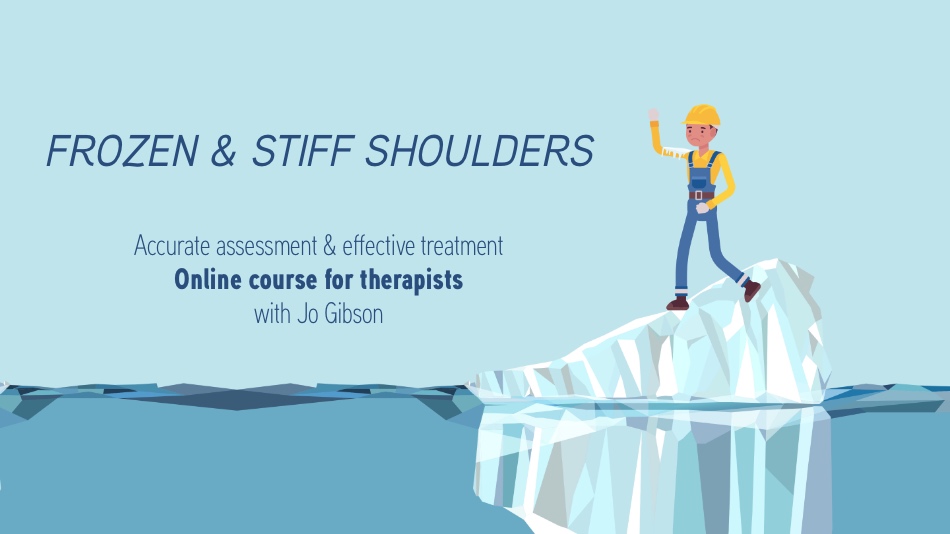
How can you rehab patients with an acromioclavicular joint (ACJ) injury, or end of range elevation shoulder pain, long term shoulder pain, clavicular osteolysis, or osteoarthritis? What exercises and manual therapy can you use in your rehab program? Find out in this podcast with Jo Gibson (Clinical Physiotherapy Specialist), and discover:
- Common ACJ mechanisms of injury
- A recap of ACJ injury classification and treatment pathways for different grades of injury.
- How useful is X-ray in ACJ injuries, and what is the best imaging for this injury?
- What imaging should ACJ injury patients have?
- What are the long term risks for ACJ patients?
- What factors correlate with worsening ACJ pain?
- Can atraumatic instability occur at the ACJ?
- What movements should be assessed in ACJ injury patients?
- Why is symptom modification helpful in shoulder pain and ACJ patients?
- What compensatory movement patterns do patients adapt that may contribute to ongoing pain?
- How can we help to break the cycle of ACJ pain?
- What tests can be performed to identify the best treatment for individual ACJ patients?
- What muscles help to improve stability around the ACJ, and how can these be targeted in ACJ injury patients?
- What exercises can be used in initial ACJ rehab?
- How can ACJ rehab be progressed?
- How can end range pain (ERP) be improved in ACJ patients?
- How to identify when scapular mechanics affect the ACJ.
- Exercises that improve scapular mechanics in ACJ patients?
- When is manual therapy useful in ACJ patients?
- What combination of manual therapy or mobilisation with movement and exercises can be used in ACJ patients?
- What role can the ACJ play in shoulder pain?
- Does the ACJ need to be symptomatic to cause shoulder pain?
- What common symptoms make you suspect the ACJ is involved in shoulder pain?
Answers to live listener questions:
- What humeral fractures or bone stress injuries occur in throwing athletes?
- Who develops humeral spiral fractures or stress fractures?
- Are recreational or high level athletes more likely to develop humeral fractures?
- Are players more or less likely to have a fracture after having a 6 week break from training?
- How can players prevent humeral stress fractures?
Free shoulder assessment infographic series
Frozen and stiff shoulder assessment & treatment with Jo Gibson
Shoulder: Steps to Success online course with Jo Gibson
Improve your assessment and treatment of shoulder pain with the Shoulder: Steps to Success online course with Jo Gibson, now available for enrolment at clinicaledge.co/shouldersuccess
Links associated with this episode:
- Improve your assessment and treatment of frozen and stiff shoulders now with Jo Gibson’s online course at clinicaledge.co/frozenshoulder
- Improve your shoulder assessment & treatment with the Shoulder: Steps to Success online course with Jo Gibson
- Improve your confidence and clinical reasoning with a free trial Clinical Edge membership
- Join Jo Gibson live on Facebook & ask your shoulder related questions every Monday
- Download and subscribe to the podcast on iTunes
- Download the podcast now using the best podcast app currently in existence - Overcast
- Listen to the podcast on Spotify
- Jo Gibson on Twitter
- Let David know what you liked about this podcast on Twitter
- Review the podcast on iTunes
- Infographics by Clinical Edge





